Seven designers helping to put Romanian design on the map
Dezeen was in Bucharest for the fifth edition of Romanian Design Week last month. Here we select products by our favourite designers at the show, including modular children's furniture, wooden headphones and traditionally patterned rugs (+ slideshow).
Organised by creative agency The Institute, this year's Romanian Design Week took place across Bucharest from 20 May to 5 June and featured an exhibition of chairs in The Carousel of Light library, as well as a presentation of traditional Roma designs at concept store Mesteshukar ButiQ .
The main exhibition – located in the Piața Amzei building – showcased the work of Romanian designers in fashion, architecture, graphic design and product design.
Cork, ceramic and wood were popular materials chosen by the product designers. Also evident was a focus on contemporary updates to traditional Romanian crafts.
We've highlighted the work of seven emerging Romanian designers who we think are contributing to the country's growing design scene:
Ubikubi
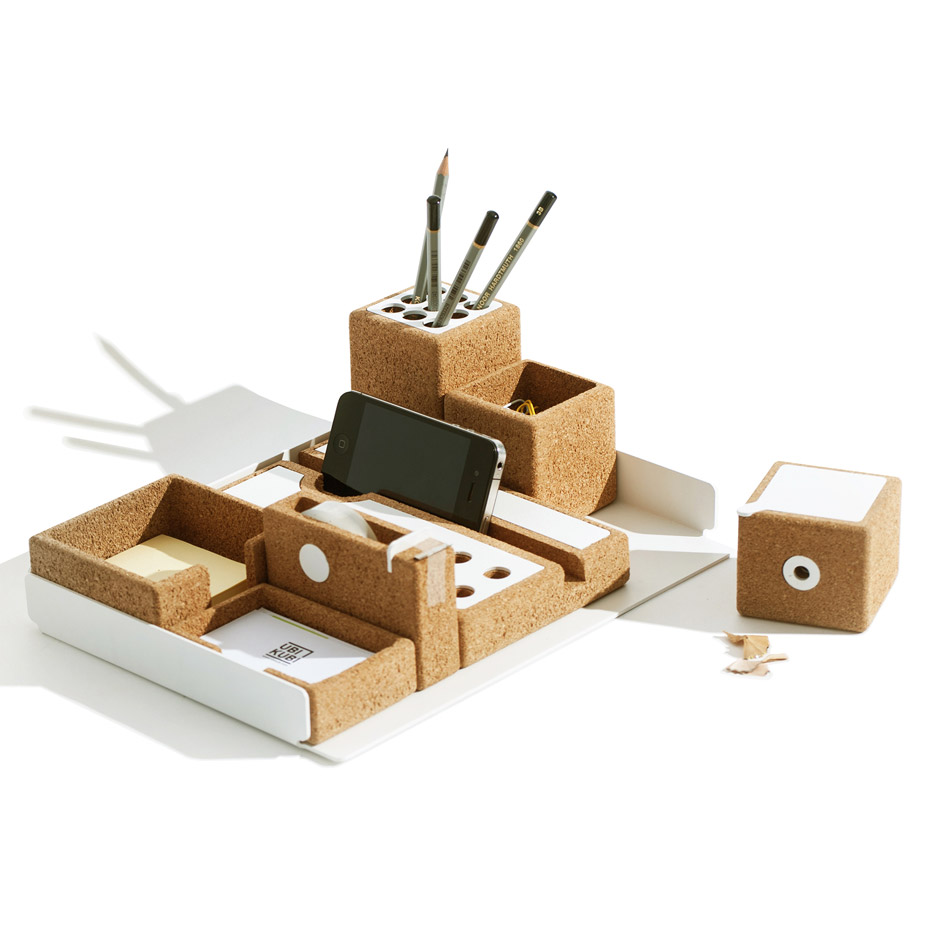
Romanian design brand Ubikubi was founded in 2014 by manufacturer and entrepreneur Robert Savu and designer Dragoş Motică, who also created the Smash lamp.
The brand uses in-house prototyping and production methods to develop its products, including furniture, lighting and home accessories. Motică says that they aim to focus on using natural materials, like wood and cork, rather than plastic.
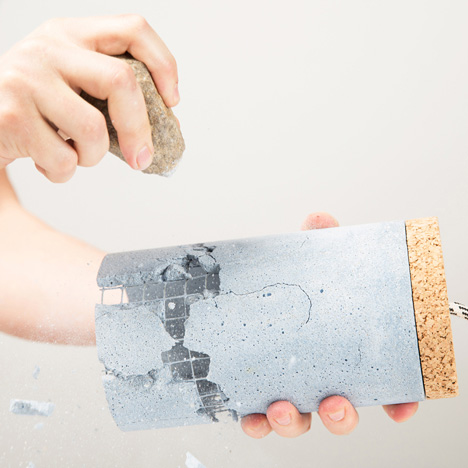
"It is quite easy to observe some ingenuity and innocence that are materialising in some simple and honest objects," Motică told Dezeen.
The Niu Desk Organiser by Motică was one of the products exhibited by Ubikubi. Nestled in a white aluminium base, cork compartments can be used to store phones, Post-it notes, cards, a sharpener, tape dispenser, pencils, needles and paper clips.
Noidoi
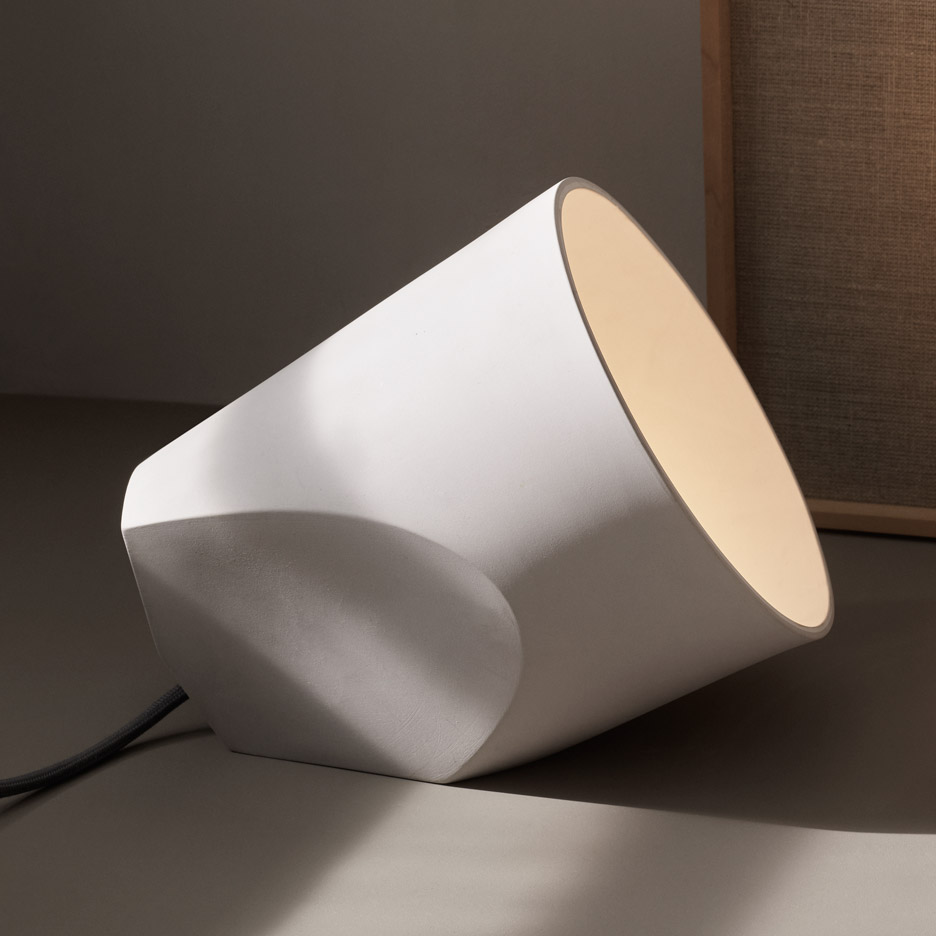
Romanian designer Cosmin Cioroiu founded product design studio Noidoi with Norwegian designer Kathrine Lønstad after the pair met while studying at the Royal Danish Academy of Fine Arts, School of Design in Copenhagen.
"Noidoi works within the field of product design with a variety of products," Cioroiu told Dezeen. "We always try to emphasise usability, detailing and craftsmanship no matter the scale of the project."
During the design week, the duo – who are currently based in Oslo – showcased a prototype of their On The Edge lamp. The light features a base with four angles so that it can be rotated to change the direction of the light, accommodating different room setups. The light can also hang as a pendant.
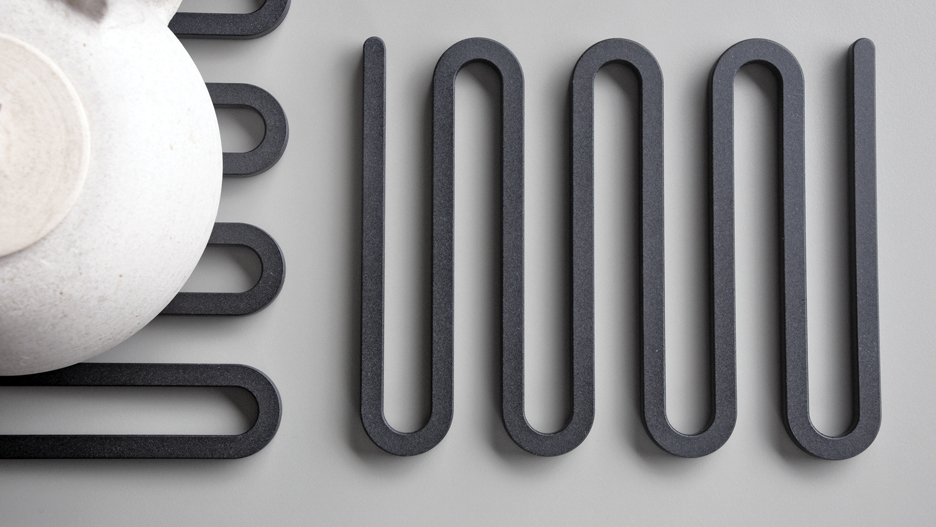
"The main inspiration for the lamp On The Edge came after observing different private homes," said the designer. "One of the common denominators for the spaces observed reflected a more multifunctional usage of the rooms.
"One outcome of this research was On The Edge, which is an interpretation of this tendency."
The lamp features both rough and smooth ceramic surfaces to encourage the user to play and move it. Noidoi also presented the Bølgen trivet, which is formed of cast iron and features a cork pad. The sculptural shape was designed to reference a heat wave.
Radu Abraham
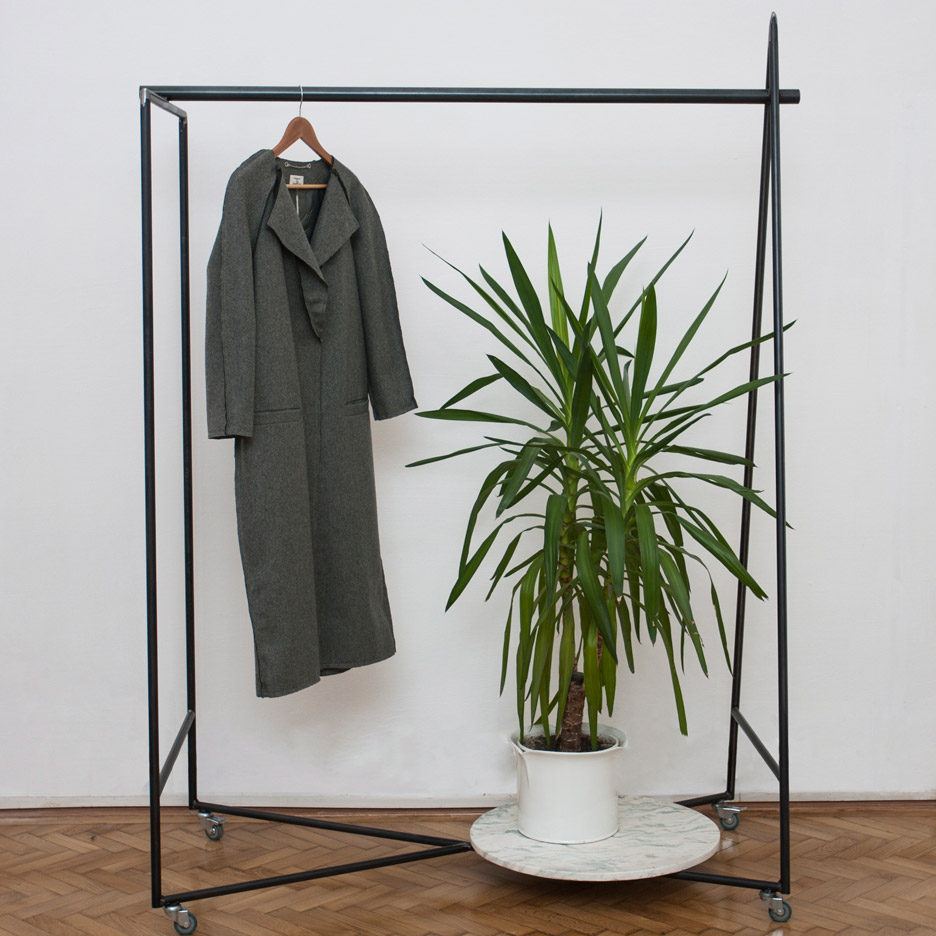
Radu Abraham graduated from the masters programme at the University of Arts and Design in Cluj-Napoca last year. He set up his own workshop to develop his products, including the Geometry clothing racks – an example of furniture that makes the most of a small amount of space.
Originally created for Romanian fashion designer Oana Lupas' showroom, the stands are formed from three basic shapes: circle, square and triangle. Designed to be mobile, the slight and lightweight structure of the rack is made entirely out of steel, with visible welding points and roughly finished surfaces.
A rail at the top can be used to hang clothes, while the steel is crossed to support a circular marble shelf at the base.
"I wanted to express elegance but in a Brutalist approach,"Abraham told Dezeen. "I chose thin steel pipes, which give a really pleasant visual contrast with the round block of marble."
"I am always looking to experiment with different contrasts, through colour or by associating various materials with different properties. In my approach to design I am interested in exploring craft, with functionality and simplicity."
Leea Toys
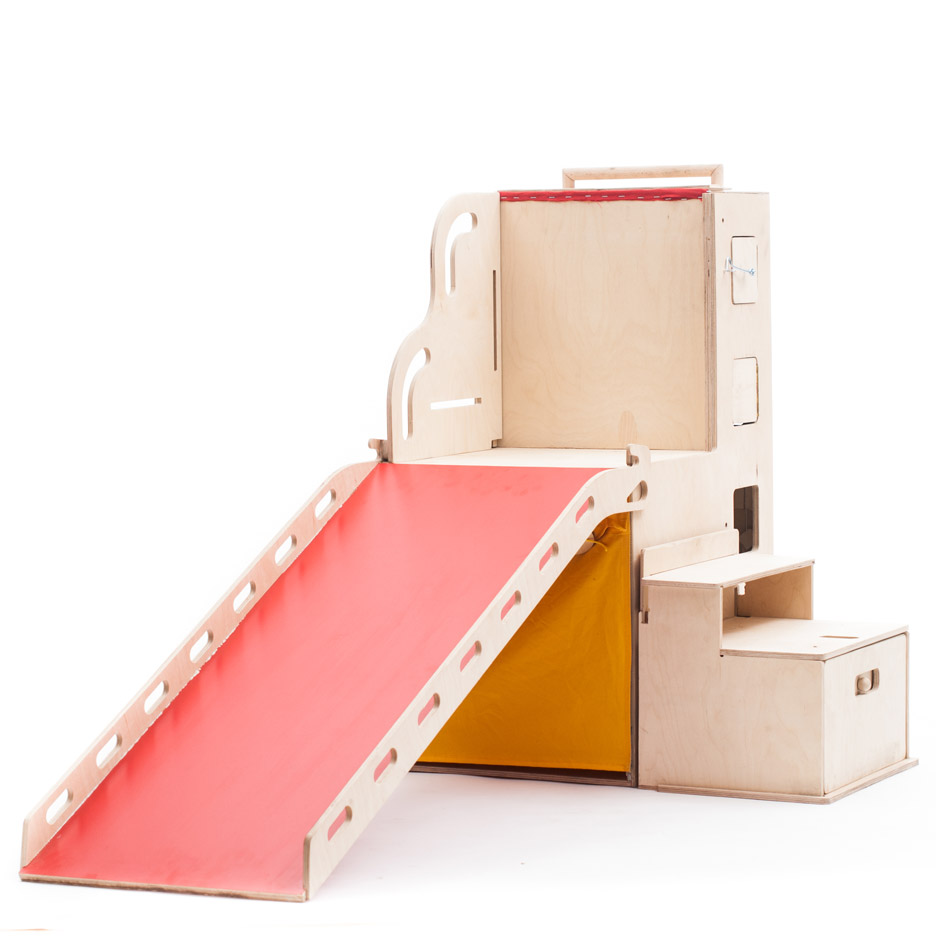
Entrepreneur Dan Popa and designer and architect Sorin Chirica created Leea Toys – a series of multifunctional wooden toys.
One of the products exhibited by the pair was the Toddler station. Aimed at children between six months to six years of age, the mobile piece of plywood furniture has 10 different elements, including a slide, small cabinets with locks, a doll's house and a climbing wall.
The piece can be modified further through a series of add-ons, like a miniature kitchen or a trampoline, which can be slotted onto the furniture.
Andrei Sandu
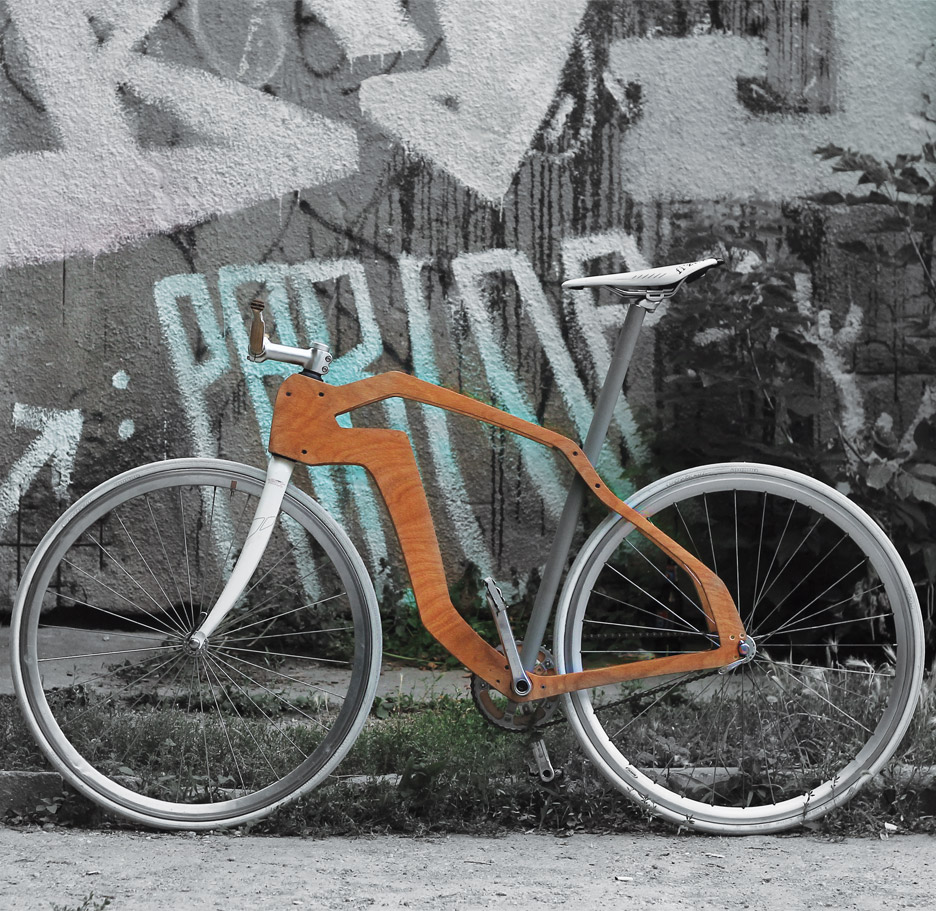
Within the design exhibition, wood was used in a variety of ways. Andrei Sandu – a graduate of the National University of Arts in Bucharest – presented a bike featuring a frame made from okoume wood. Called Urban Bicycle, the product developed from the designer's interest in mobility within cities.
Sandu chose the material to make a more sustainable product than others on the market. The wood was processed to make it durable, while the irregular form was created to make it look more flexible.
Prototip Studio
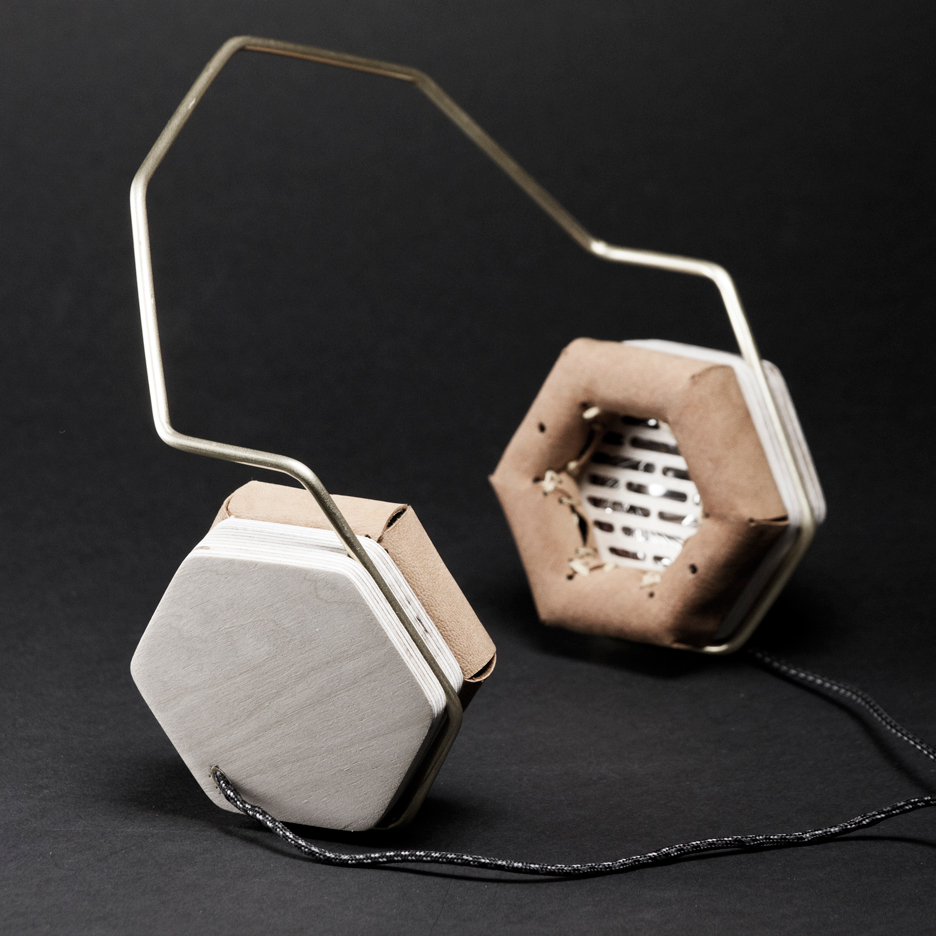
Cluj-Napoca-based Prototip Studio's headphones were another wooden project on show. Founded by architects Ioana Ciurea and Bogdan Goția, the studio developed the product to combine its interests in music and aesthetic. They chose wood because of its acoustic qualities, but also because they saw it as an ironic choice for technology.
Prototip collaborated with Acoustic Density to develop the series of headphones, one of which features hexagonal ear covers designed to support sound vibrations.
"The Woodphones are composed from pieces that use birch wood as a main material and yellow copper for the metallic parts," Ciurea told Dezeen. "High-quality speakers are placed in a wood box, shaped in a circular and sculptural way in order to maximise the quality of the sound."
"The team from Acoustic Density rethought a path for sound, building a sculptural cocoon for waves near the speaker in order to find the clearest sound you can get."
Dare to Rug
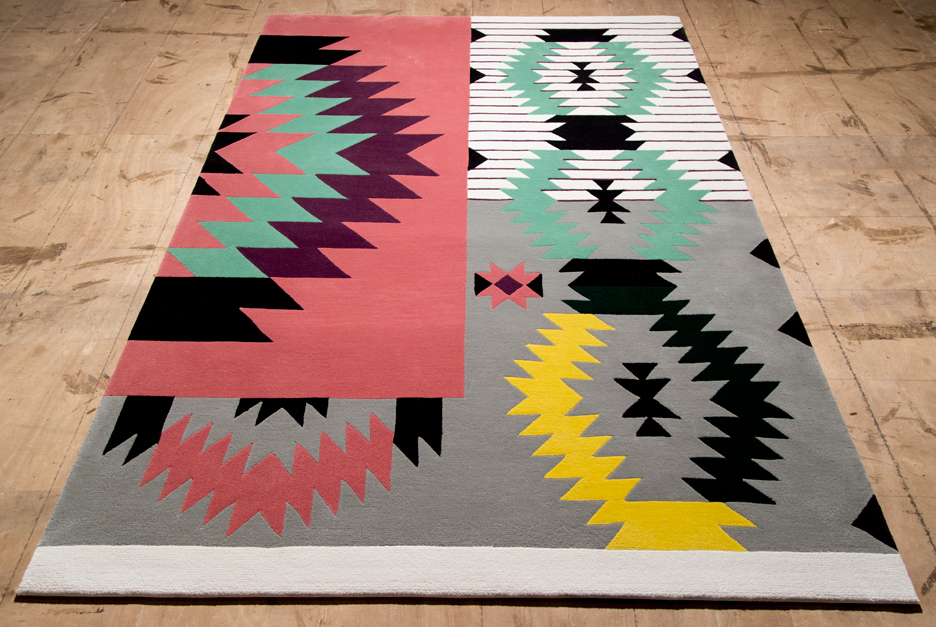
Launched in 2015 by interior designers Andreea Batros and Flavia Scînteanu, Dare to Rug is the first Romanian designer brand that creates hand-tufted rugs. The pair chose to base themselves in Romania to promote design within the country and described their first collection – called Romanian Moods – as "a mood board of feelings overlapped with traditional Romanian patterns".
The designers have reinterpreted the traditional patterns of different historical regions in Romania – Oltenia, Maramureș, Transylvania, Moldova, Basarabia, Bucovina, Dobrogea, Muntenia, Banat and Crișana – with bold colours to give the designs a contemporary feel.